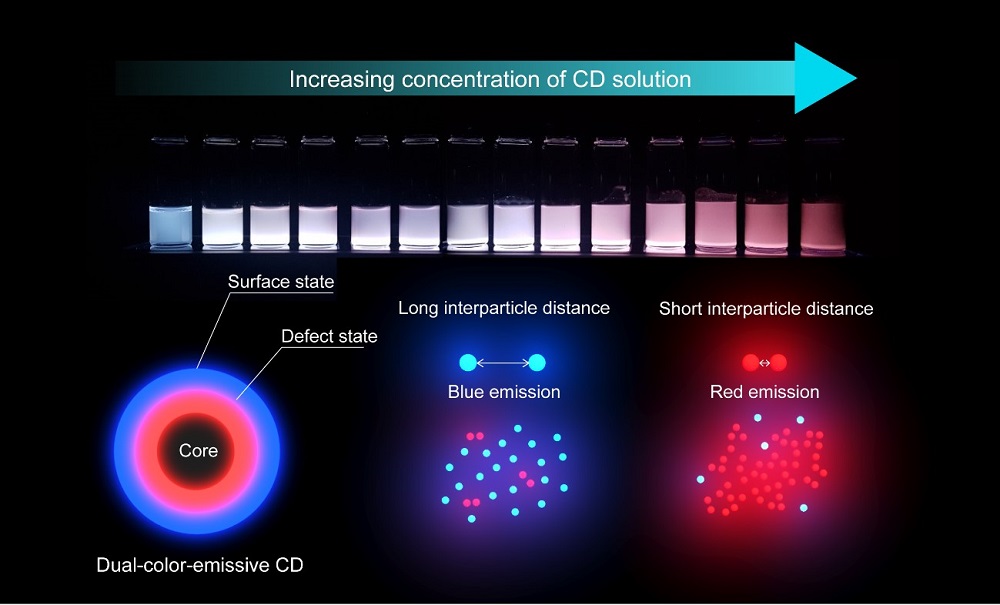Researchers from the Korea Advanced Institute of Science and Technology (KAIST) have synthesized a collection of nanoparticles known as carbon dots, capable of emitting multiple wavelengths of light from a single particle.
The team discovered that the properties of light emitted by the carbon dot are dependent upon the dispersion of the carbon dots, or the interparticle distance between each dot. The discovery could allow researchers to understand how to control these carbon dots and create new, environmentally responsible displays, lighting, and sensing technology.

Photoluminescence change of dual-color-emissive carbon dots (CDs) depending on their concentration. Blue and red emissions show different contributions with different interparticle distances. Courtesy of professor Do Hyun Kim, KAIST.
Carbon dots, due to their low toxicity, are an attractive alternative to noncarbon dots requiring toxic heavy metals that are harmful to the environment. As technology demands smaller and more sophisticated parts, interest in fluorescent nanoparticles has increased due to the purity of colors, as well as their tunability to meet desired optical properties.
In carbon dots, multiwavelength emission can be stimulated under a single excitation source, enabling generation of white light from a single particle by emitting multiple wavelengths simultaneously.
Carbon dots also exhibit a concentration-dependent photoluminescence, meaning the distance between the individual carbon dots affects the light that the carbon dots subsequently emit under excitation.
It was previously believed that the concentration dependency of carbon dots was due to a hydrogen bonding effect. The KAIST team, led by Do Hyun Kim, a professor in the Department of Chemical and Biomolecular Engineering, posited and demonstrated that multiwavelength emission is instead due to the interparticle distances between each carbon dot.
The researchers examined how the intensity of the red and blue colors changed as they varied interparticle distances, or concentration, of the carbon dots. As they adjusted concentration, light emitted from the dots would transform. By varying the concentration, the team showed its ability to control the relative intensity of the colors, as well as emit them simultaneously to generate a single-source white light.
“The concentration dependence of the photoluminescence of carbon dots on the change of the emissive origins for different interparticle distances has been overlooked in previous research,” Yoo said. “With the analysis of the dual-color-emission phenomenon of carbon dots, we believe that this result may provide a new perspective to investigate their photoluminescence mechanism.”
The researchers predict that the ability to control the photoluminescence of carbon dots will likely be heavily utilized in the continued development of solid-state lighting applications and sensing.
The research was published in Physical Chemistry Chemical Physics (www.doi.org/10.1039/d0cp02120b).